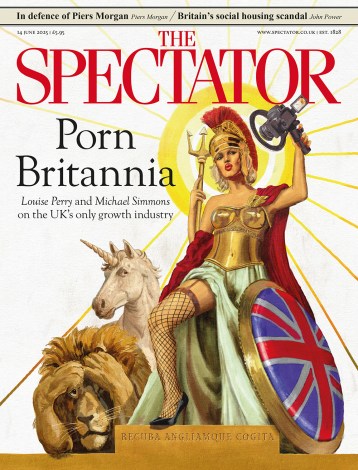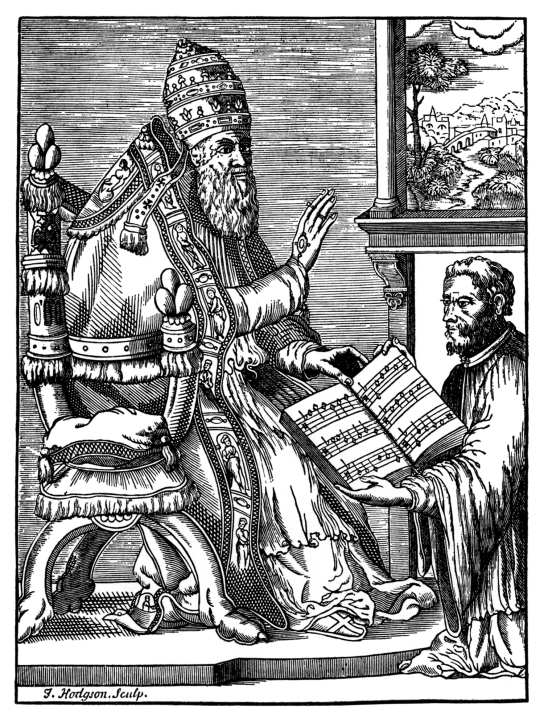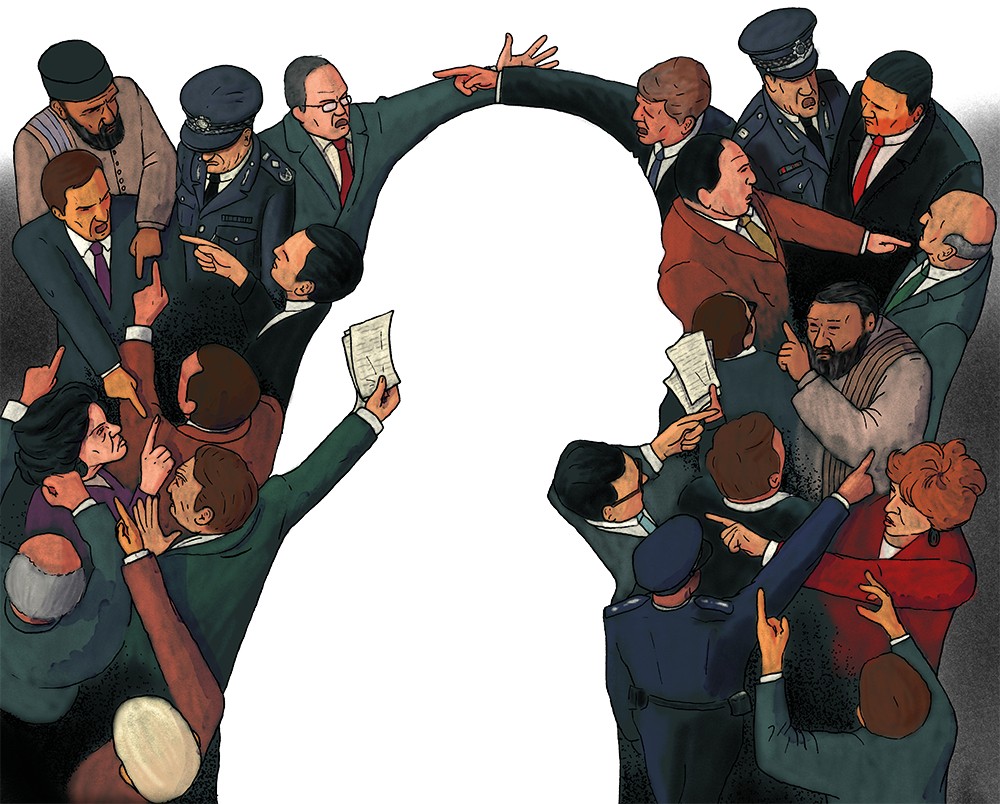
Last month I watched conductor Harry Christophers blow through what sounded like an arthritic harmonica but in fact was a pure-toned pitch pipe, which handed the singers of his vocal group the Sixteen their starting notes. Then the Kyrie from Giovanni Pierluigi da Palestrina’s Missa Regina coeli unfolded inside the resonant splendour of St James’s Church in Mayfair and, 500 years after his birth, I grasped why Palestrina, maestro di cappella of St Peter’s Basilica in Rome from 1551-5, still has the capacity to surprise.
Christophers and the Sixteen are celebrating this greatest of the late Renaissance composers in his anniversary year with three concerts promoted by the Wigmore Hall but held at St James’s: this music lives or dies by the acoustic in which it is heard. That first concert returned me to my days as a music student trying my best to unpick, then put back together, Palestrina scores, always with a sinking feeling that I might as well be unscrambling Einstein’s theory of relativity; this was advanced mathematics, not music. The point was never made that Palestrina laid down rules because he had listened carefully to the acoustics of churches not dissimilar to St James’s, then conceived a compositional approach that led him to create music of unfailing luminosity.
A second anniversary concert on 18 June will focus on Palestrina’s music depicting the Last Supper, and then there’s a gap until the final instalment of the series on 22 October. The very idea that anyone attending these concerts might have heard weak links in his robust chains of sound would have filled Palestrina with dread and that’s where those rules came in. In a Palestrina score every note in every chord needed to have its function; notes had to arrive from somewhere and land somewhere else. Doubling the same dissonance across different voices – which would have temporarily dimmed a chord – was banned. Notes moving in consecutive sequence between different voices – diluting the rich texture by having one part existing as a mini-me shadow of another – was similarly banned. It’s a checklist of compositional terms and conditions that goes on and on, but out of this intense discipline Palestrina found enormous creative freedom. Lassus and Victoria – also associated with Rome and the papal chapel – composed magnificent music, but no composer of the period wrote as prolifically and with such consistent finesse as Palestrina.
He matters historically, too, because, without his brilliance, Renaissance choral music might have been allowed to wither away. Growing up in Rome, he had his first musical training in the city, and the Catholic church formed him as composer and thinker. By the time of the Council of Trent – which, beginning in 1545, was intended to give church orthodoxy a spring-clean in the light of the Protestant Reformation – the fear was that church music had become too fancy for its own good. People were in danger of enjoying the sound of the music at the expense of engaging with its liturgical texts.
Deep in the mythology is the suggestion that, in 1564, Palestrina wrote his Pope Marcellus Mass in response to a papal request for something that might prove otherwise. Everything came out right. Palestrina’s pristine vocal lines didn’t strain any voices and, most importantly, allowed for easy comprehension of the text. Had he failed, the church might have stopped polyphonic music altogether – but instead his piece became the prototype for choral music of which the church could approve. For his efforts, Palestrina became known as ‘the saviour of music’.
Out of this intense discipline Palestrina found enormous creative freedom
Today Pope Marcellus Mass, and his Stabat Mater setting, remain Palestrina’s most popular and often performed works. When we spoke a few weeks after that first anniversary concert, Harry Christophers was keen to emphasise just how much Palestrina exists – ‘there are 104 masses, but only three or four of them are regularly performed’. There are currently nine Palestrina CDs on the Sixteen’s own Coro label, with more in the pipeline.
But even Christophers took time to work Palestrina out. ‘For years I didn’t touch his music,’ he confides, somewhat to my surprise, ‘because as a conductor you want to interpret. This music was intended originally to adorn the liturgy, but now we’re taking it out of its liturgical context, presenting it as great music. Palestrina is the master craftsman and I couldn’t impose myself on it too much. I had to learn to keep out the way and let the music speak for itself.’
Soprano Kirsty Hopkins, who has been a mainstay of the Sixteen for the past 16 years, remains in awe of Palestrina’s empathy for voices. ‘He tops my list of composers who make singing incredibly easy,’ she tells me. ‘He understood instinctively how long a phrase can be and how much breath you need in between phrases, so as not to be forced to snatch a sneaky breath. This means we can focus entirely on giving texts their meaning.’
As a listener the challenge, and indeed the joy, of Palestrina lies in tracking how his weave of interlinking voices, moving inexorably through time, keeps turning on its axes. It’s tempting to categorise Palestrina as a ‘classical composer’, forgetting that he was writing two centuries before Haydn and Mozart, and that his musical vocabulary inhabits whole other worlds. Abrupt shifts of harmony and key changes, the narrative juice of 18th- and 19th-century music, are entirely absent from Palestrina. His rhythms roll out of the stresses and inclines of liturgical text; you’ll never hear dislocating rhythmic jolts or, heaven forfend, any beat-shifting syncopations. The fascination lies almost entirely in following the network of association between intertwining vocal lines as they imitate each other’s paths.
But Palestrina often feels like a kindred spirit to the free flow of sound that emerged from 20th-century composers such as Cage and Ligeti. The stylistic distance from the dominant 18th- and 19th-century compositional traditions has often led to nods of recognition between the early-music and modern-music ghettos. Think about how that supposed 1950s enfant terrible Peter Maxwell Davies built compositions around Henry Purcell, or of David Munrow – the nearest thing the British early-music scene had to a rock star – recording Rattlebone and Ploughjack in 1976 with Ashley Hutchings of folksy rock group Fairport Convention.
Christophers helps clarify the reasons for this closeness. Ligeti – who heard music as continuums of jittery, snaking texture – often noted in his scores that bar lines were strictly for the practicality of rehearsal so that musicians could find their place. Palestrina didn’t use bars either, albeit because the convention didn’t exist. Christophers tells me that modern editions come with added bar lines, but merely as a rehearsal guide, which leads me to ask about the material the Sixteen use to perform from. Is finding reliable sources the stuff of nightmares? ‘In Victorian times, editors would take out clashes between major and minor chords, which was a real feature of his style, assuming they were a mistake,’ he winces. ‘Modern editions tend to be very good though. Some things singers would have done naturally back in the day, like automatically flattening or sharpening notes, because they knew the language of the music, mean that sometimes we must experiment: did he want A flat there? Or an A? But the thing I say to the choir more than anything else – never become a slave to the bar line. The shape of the words, that’s what matters.’
Kirsty Hopkins reminds me that this music has been part of the DNA of British choirs for centuries and that the key to successful Palestrina is twofold: breath and blend. Choirs like the Sixteen do use vibrato, but not in the manner of a Wagnerian singer. To hear that all-important weave, their vibrato must be finely mingled. ‘Breathing properly means making sure we’re heading for the right moment in a word. A word like “Hallelujah”, measured against the bar line could sound very square, but the point is to get the word stress right.’
There’s a whole PhD thesis to be written, you feel, on breath control in Palestrina, but both Christophers and Hopkins agree with my hunch that if singers are breathing in a natural way, determined by the words, then the music can start to breathe naturally across its structure. And Palestrina’s music maps out the dimensions of those majestic acoustics, testament to, depending on how you hear it, the glory of physics – or God.
The Sixteen celebrate Palestrina’s 500th anniversary on 18 June and 22 October at St James’s Church, Spanish Place.








Comments